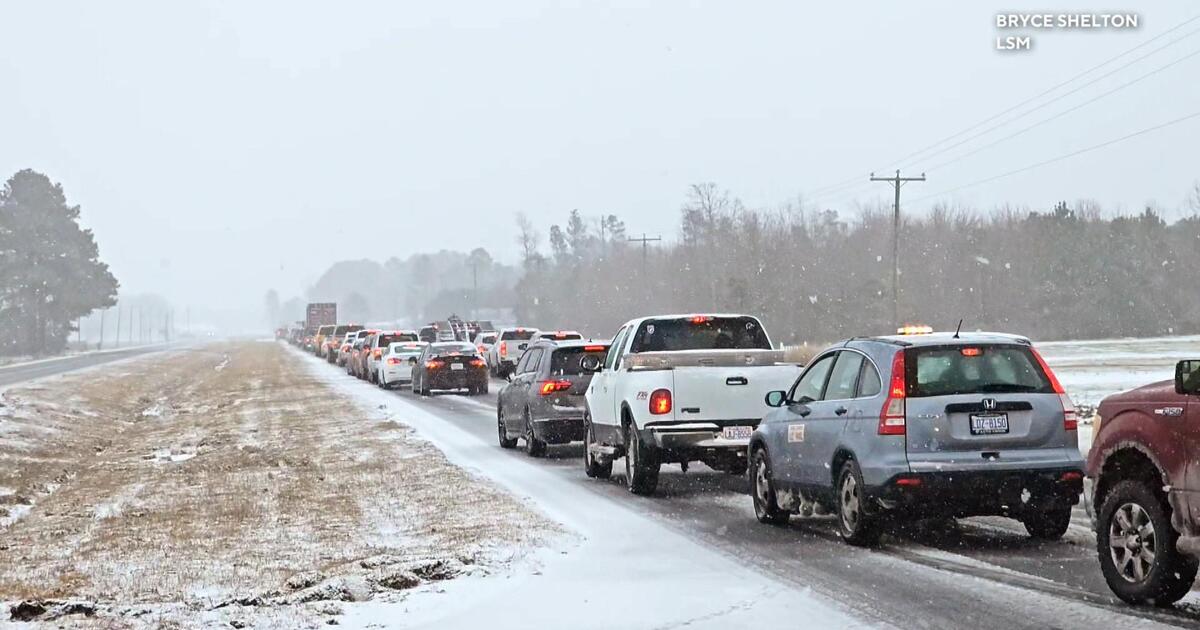Understanding the Arctic Blast and Snow Chaos
As an Arctic blast grips the Midwest, communities in Virginia and North Carolina are grappling with the repercussions of heavy snowfall. These winter weather crises have not only transformed landscapes but are also presenting unprecedented challenges to infrastructure and daily life. In this article, we will explore the extent of these extreme weather events, their impacts on local communities, and the measures being taken to address the chaos.
The Nature of the Arctic Blast
At its core, an Arctic blast refers to a significant drop in temperatures resulting from cold air masses descending from the polar regions. This phenomenon can lead to severe winter weather, including heavy snowfall and ice storms. In recent years, such events have become increasingly common, raising questions about changing climate patterns and their implications for future weather behavior.
During this latest Arctic blast, regions unaccustomed to severe winter weather, such as Virginia and North Carolina, have been particularly affected. The National Weather Service reported record snowfall levels in these areas, which typically experience milder winters. The sudden arrival of this Arctic air has left many residents unprepared, leading to widespread disruption.
Impact on Communities
The effects of the Arctic blast and snow chaos on local communities are profound and multifaceted. Here are some of the major impacts:
- Transportation Disruptions: With snow accumulating rapidly, roads became treacherous, leading to numerous accidents and travel delays. Many highways were temporarily closed, stranding travelers and complicating logistics for essential goods.
- Power Outages: The weight of heavy snow on power lines caused widespread outages. Utility companies scrambled to restore electricity, but many households were left without power for days, leading to discomfort and safety concerns.
- Emergency Services Strain: First responders faced significant challenges as roads became impassable. Emergency medical services and fire departments reported delays in responding to calls, raising alarms about public safety.
- Economic Impact: Local businesses, particularly those reliant on foot traffic, suffered as customers stayed home. The hospitality industry was hit hard, with many restaurants and hotels reporting cancellations.
Infrastructure Challenges
The infrastructure in Virginia and North Carolina, designed for milder winters, is being tested like never before. Snow removal equipment, typically not utilized at such scales, struggled to keep up with the heavy snowfall. Local governments had to mobilize additional resources to manage the situation effectively.
Furthermore, the combination of snow and ice has exposed vulnerabilities in urban planning. Many cities are reconsidering their winter preparedness strategies, including:
- Improving Snow Removal Strategies: Municipalities are investing in more robust snow removal equipment and updating their emergency response plans to ensure timely interventions.
- Enhancing Public Communication: Clear communication channels are vital during extreme weather. Authorities are focusing on improving real-time updates to keep residents informed about road conditions and safety warnings.
- Community Engagement: Encouraging residents to participate in snow-related preparations, such as clearing sidewalks and helping neighbors, fosters a sense of community resilience.
Lessons Learned from the Snow Chaos
Every crisis presents an opportunity for growth and improvement. The recent Arctic blast and snow chaos have highlighted the need for better preparedness in regions that typically experience milder winters. Here are some key lessons learned:
- Preparedness is Key: Communities should invest in winter preparedness programs that include snow emergency plans, equipment readiness, and public awareness campaigns.
- Flexibility in Response: Emergency response plans must be adaptable to accommodate unexpected weather events, ensuring that resources can be redirected where they are needed most.
- Building Community Resilience: Engaging communities in winter preparedness efforts can enhance resilience. Initiatives such as neighborhood watch programs for snow emergencies can foster cooperation.
Looking Ahead: What’s Next for the Affected Areas?
As we move forward, the focus will be on recovery and resilience. Local governments in Virginia and North Carolina are already assessing the damage and looking for ways to improve their winter weather strategies. Here are some initiatives that might emerge:
- Investment in Infrastructure: There may be increased funding for infrastructure improvements to handle future snowstorms, including better drainage systems and road reinforcement.
- Climate Adaptation Strategies: Policymakers will likely push for climate adaptation measures to address the broader implications of changing weather patterns.
- Education and Training: Training programs for emergency personnel and community members on how to respond to severe winter weather can enhance overall preparedness.
Conclusion
The Arctic blast and the resulting snow chaos have tested the limits of communities in Virginia and North Carolina. As these areas work to recover from the impact of unprecedented snowfall, the lessons learned will shape future responses to similar challenges. By investing in infrastructure improvements, enhancing emergency preparedness, and fostering community resilience, these regions can better navigate the complexities of winter weather crises. Embracing these changes will not only strengthen their ability to cope with extreme weather but also serve as a model for other communities facing similar threats.
See more Your Daily Weather



